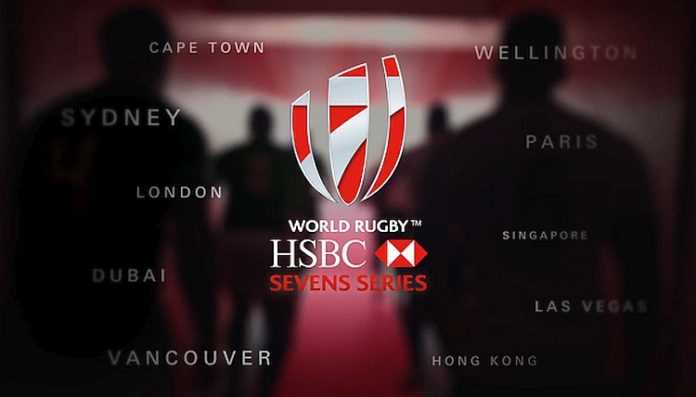On International Women’s Day, 28 members of the United States women’s national soccer team filed a lawsuit in U.S. Federal Court in the Central District of California entitled:
Plaintiffs’ Collective Action Complaint for Violations
of the Equal Pay Act and Class Action Complaint
for Violation of Title VII of the Civil Rights Act of 1964
In short, the U.S. women players (“WNT”) are suing because they are paid less than the members of the U.S. men’s national team (“MNT”), but are far more successful on the field and – according to the complaint – earn just as much or more money for the U.S. Soccer Federation than the players on the men’s team.
The suit comes about three months before the women will play in the FIFA Women’s World Cup in France as defending champions, and as of today, as the no. 1-ranked team in the world (although their recent results question that status).
So what now? There are three immediate impacts:
● The narrative of the U.S. women’s team has changed, and the players and coaches will be now be asked continuously about the suit, the time being spent on it by players and whether it has already, or will in the future injure the performance of the American women in their defense of their World Cup title.
No matter what happens, it’s clear that the most underpaid people at U.S. Soccer going forward will be the team’s press officers.
● The folks at the U.S. Soccer Federation are now on the spot and will have to answer the suit, and will sooner or later have to make a decision as to what should be done: litigate it or settle it.
● A lot more information is now available about what players in the U.S. get paid to play on the national team.
On the last point, the complaint makes a series of assertions which make for worthwhile reading about being a professional soccer player in the United States. Some highlights quoted from the complaint:
58. A comparison of the WNT and MNT pay shows that if each team played 20 friendlies in a year and each team won all twenty friendlies, female WNT players would earn a maximum of $99,000 or $4,950 per game, while similarly situated male MNT players would earn an average of $263,320 or $13,166 per game against the various levels of competition they would face. A 20-game winning top tier WNT player would earn only 38% of the compensation of a similarly situated MNT player.
60. From March 19, 2013 through December 31, 2016, WNT players earned only $15,000 total for being asked to try out for the World Cup team and for making the team roster. MNT players, on the other hand, earned $55,000 each for making their team’s roster in 2014 and could have earned $68,750 each for making their team’s roster in 2018.
61. The pay for advancement through the rounds of the World Cup was so skewed that, in 2014, the USSF provided the MNT with performance bonuses totaling $5,375,000 for losing in the Round of 16, while, in 2015, the USSF provided the WNT with only $1,725,000 for winning the entire tournament. The WNT earned more than three times less than the MNT while performing demonstrably better.
(On the pay differential cited in paragraph 61, it’s worthwhile to note that FIFA’s payouts to participating teams at the World Cup and the Women’s World Cup were vastly different. The U.S. men made the Round of 16 at the 2014 World Cup in Brazil and received $9 million from FIFA. In contrast, the U.S. women won the 2015 Women’s World Cup and received $2 million from FIFA. The World Cup winners in 2014 – Germany – received $35 million from FIFA.
(So the USSF paid the women 86.25% of the money it got from FIFA, and paid the men only 59.72% of FIFA’s payout.)
The complaint states a series of other disparities in treatment, including “playing, training and travel conditions; promotion of their games; support and development for their games
and other terms and conditions of their employment that are less favorable than
provided to MNT players.”
In specific, the complaint complains about women having to play on artificial turf fields 13 times between 2014-17 (over 62 games), while the men’s team played only once (out of 49 matches) on artificial turf during the same period. And that while – in 2017 – the U.S. men’s team flew to matches on charters 17 times, this was not done once for the women’s team.
The filing asks to certify a class of plaintiffs from among all of the women’s team’s players from 4 February 2015 to the end date of the case, and requests damages including back pay and benefits, compensatory and punitive damages and attorney’s fees (which will be substantial in this case).
What the complaint does not talk about – quite properly – is the discrepancy between salaries of players in Major League Soccer, a men’s league, and the National Women’s Soccer League. In short,
● MLS salaries have a minimum of $54,500, and a small number of “designated players” earn well of $1 million.
● NWSL salaries have a minimum of $16,538 and a maximum of $46,200, less than the MLS minimum.
So the money paid to the women’s players on the National Team is that much dearer, and the U.S. Soccer Federation employs both men and women as members of the National Teams and so can be attacked on the equal pay grounds, where the club leagues – which are separate and unrelated entities – can not.
U.S. Soccer’s senior leadership, and its lawyers, now have to determine how to handle the complaint. They can fight it, negotiate and/or settle the case and must determine whether they have sufficient funds to do any of these things. With the 2026 FIFA World Cup coming to the U.S. (and Canada and Mexico), there will be a lot more money available for everyone, so the USSF might be wise to settle now rather than later.
The suit is a bad look for the federation and a warning to U.S. National Governing Bodies in team sports. But, from the public’s viewpoint, the way the women’s National Team is looked at from now through the World Cup has changed.
If the team wins in France, the players will be civil rights heroes who protested and won while doing it. If the U.S. falls short in June and is eliminated early, the suit will be the distraction that kept them from playing their best.
As noted above, perhaps the loser in all of this is the public relations staff of the USSF and the Women’s National Team.
Rich Perelman
Editor


























